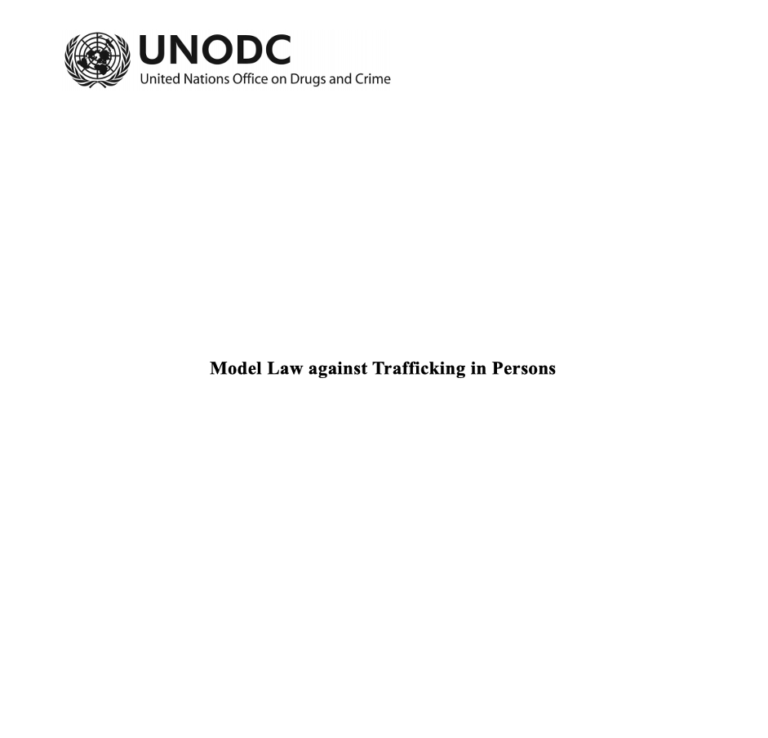The UNODC Model Law against Trafficking in Persons was developed by the
United Nations Office on Drugs and Crime (UNODC) in response to the request of the General Assembly to the Secretary-General to promote and assist the efforts of Member States to become party to and implement the United Nations Convention against Transnational Organised Crime and the Protocols thereto. It was developed in particular to assist States in implementing the provisions contained in the Protocol to Prevent, Suppress and Punish Trafficking in Persons, Especially Women and Children, supplementing that Convention.

